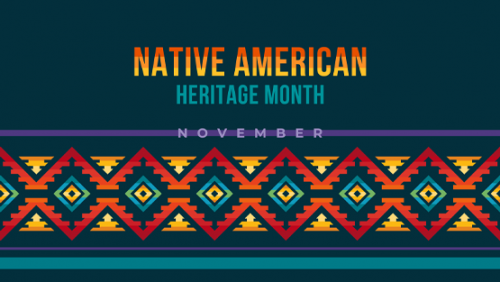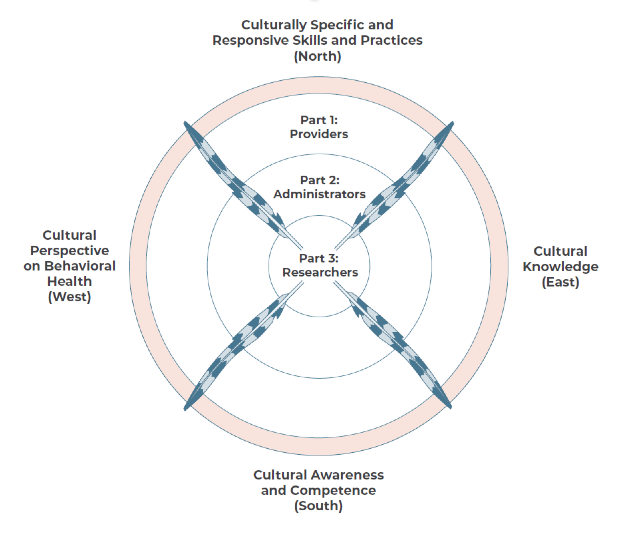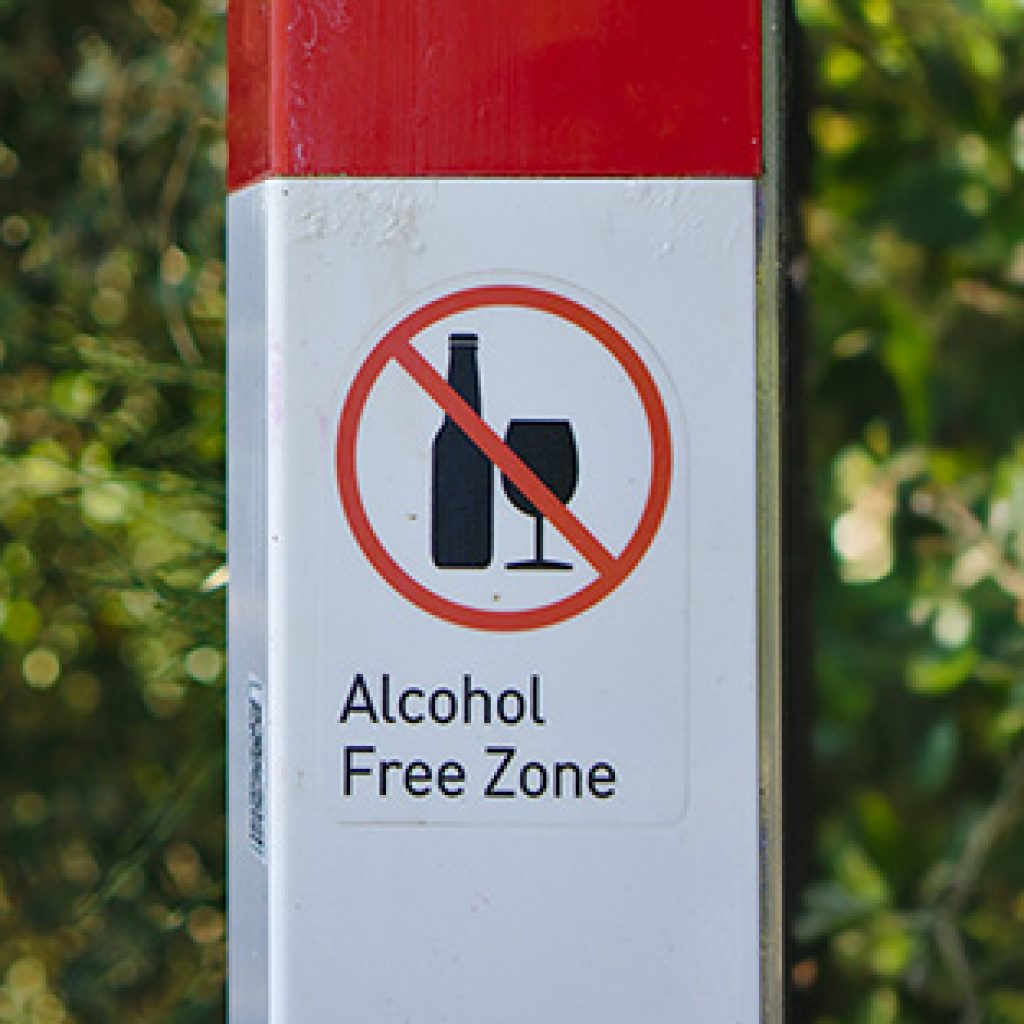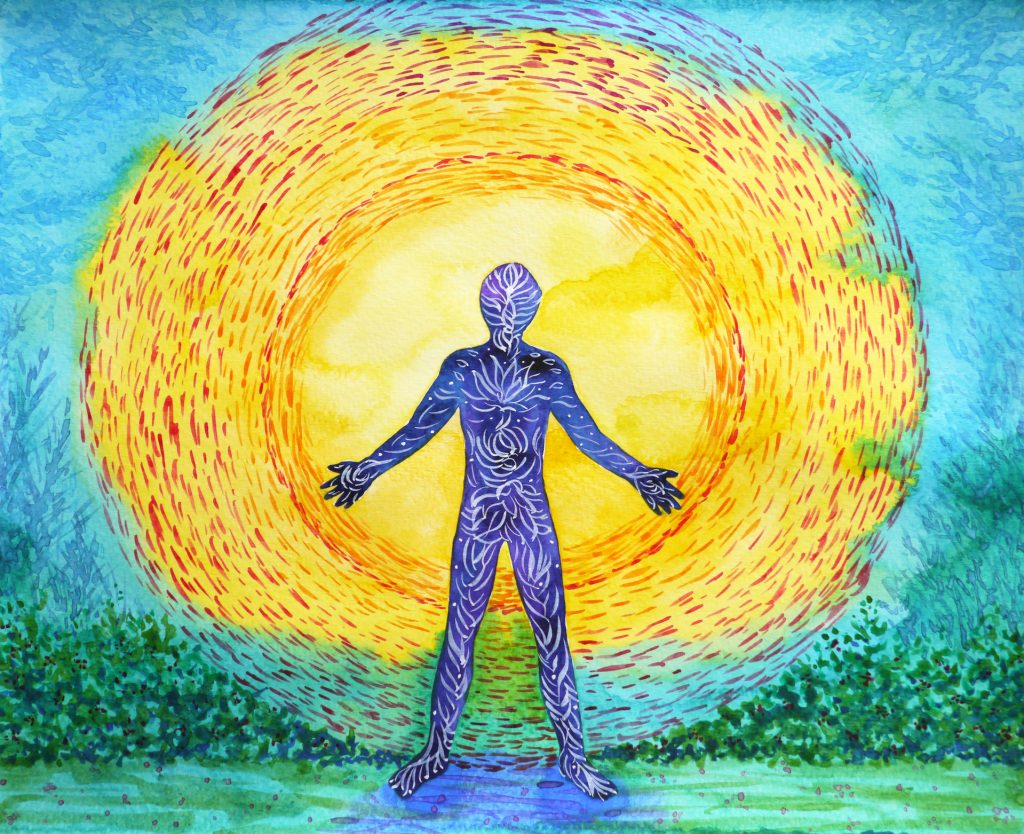9 Core Concepts for Providing Culturally Competent Care to American Indians and Alaska Natives
 Every November, we celebrate Native American Heritage Month. This awareness raising event is meant to explore the lived experience and culture of Indigenous peoples both historically and in American life today. According to the National Congress of American Indians, it is also an ideal time to raise awareness about the unique challenges Native people have faced both historically and in the present. SAMHSA developed a publication, TIP 61: Behavioral Health Services for American Indians and Alaska Natives in 2019, in order to provide behavioral health professionals with practical guidance about Native American history, historical trauma, and critical cultural perspectives in order to support the mental health and well-being of American Indians and Alaska Native clients.
Every November, we celebrate Native American Heritage Month. This awareness raising event is meant to explore the lived experience and culture of Indigenous peoples both historically and in American life today. According to the National Congress of American Indians, it is also an ideal time to raise awareness about the unique challenges Native people have faced both historically and in the present. SAMHSA developed a publication, TIP 61: Behavioral Health Services for American Indians and Alaska Natives in 2019, in order to provide behavioral health professionals with practical guidance about Native American history, historical trauma, and critical cultural perspectives in order to support the mental health and well-being of American Indians and Alaska Native clients.
The Development Of TIP 61
TIP 61 is designed to work as a guidance document for those working with American Indian and Alaska Native clients. This publication outlines culturally adapted approaches for preventing and treating addiction and mental illness, along with cultural competencies. Approaches were tailored through a consensus-based process in collaboration with American Indian and Alaska Native professionals. This guidance was developed in consideration of the many disparities’ clients of diverse tribes and communities have experienced collectively in access to care, funding, resources for health services, quality and quantity of services, treatment outcomes, and health education and prevention services. The strategies, tools, and practices provided in TIP 61 help behavioral health providers to overcome or address these disparities.
TIP 61 readers will gain increased understanding of:
- American Indian and Alaska Native demographics, history, and behavioral health;
- Cultural awareness, cultural identity, and culture-specific knowledge for working with clients from the named cultures and communities;
- How health beliefs, help-seeking behavior, and healing practices are impacted by client cultures and communities;
- Interventions for prevention and treatment that are grounded in evidence-based and culturally adapted practices;
- Ways of becoming culturally responsive at the program level by using American Indian and Alaska Native beliefs and heritage in all aspects of programming and staffing (SAMHSA, 2018).
- “Importance of historical trauma” It is critical that providers learn about, acknowledge, and address the effects of historical trauma when working with American Indian and Alaska Native clients. Most American Indians and Alaska Natives believe that historical trauma, including the loss of culture lies at the heart of substance use and mental illness within their communities. This section covers not only the history of traditional cultures and historical trauma, but also its impact on American Indians and Alaska Natives at the time it happened and how it currently still impacts them. The “Cycle of Historical Trauma” provides insight into the connection between trauma and increased risk of substance abuse and dependence, as well as risk of suicidality, mental disorders, and issues such as homelessness and unemployment. The Myths and Facts About American Indians and Alaska Natives section dispels many misconceptions, replacing them with accurate information.
- “Acceptance of a holistic view of behavioral health” Within American Indian and Alaska Native cultures, substance use and mental illness are not defined as diseases, diagnoses, or moral maladies, nor are they viewed as simply physical or character flaws. They are seen as a symptom of imbalance within the world. Healing and treatment approaches must be holistic and include all aspects of life – spiritual, emotional, physical, social, behavioral, and cognitive. This principle does not have a section within TIP 61 but is important as a basis for beginning all treatment for substance use and mental disorders.
- “Role of culture and cultural identity” It is incumbent on the provider to explore the role of culture and cultural identity with their clients. Not all American Indian and Alaska Native clients recognize the importance of culture or perceive the need for traditional practices in their recovery. However, it has been found that through reconnection to native communities, and traditional healing practices, individuals can reclaim strengths, and cultural identity which have been supportive on their healing journey. One excellent tool in this section is the Cycle of Assimilation and Reconnection that helps provider and client examine current self-perceptions of cultural identity and helps begin the process of reconnecting with native cultural identity. Another important part of this section is the insight into the importance of worldview, cultural values, sense of community, beliefs, and overall family structure are for implementing culturally responsive treatment.
- “Recognition of sovereignty” Tribal governments are their own sovereign nation. Each nation adopts its own tribal codes and honors its own unique history. In this section, the importance of including the tribal systems in all aspects of treatment, including referrals, planning, cooperative agreements, and program development is emphasized in order to help ensure success.
- “Significance of community” Community is at the center of healing. The community that is being served must be given opportunities to give input on the types of services needed, and best practices for receiving treatment. Here the importance of including community leaders, councils, clients, potential clients, and client families is stressed for the purpose of receiving important input into the treatment process, matching treatment to clients, and to increase utilization of services by the community. One part of this section includes a Traditional American Indian and Alaska Native Values and Beliefs tool listing native cultural beliefs and values and questions about personal beliefs and values to help evaluate how culture affects beliefs and discover not only differences, but more importantly, similarities. It is also recommended that treatment providers who serve the community, engage in native community events.
- “Value of cultural awareness” This concept is vital to providers understanding how their own culture affects their worldview and that of their clients. Tools from the previous section are also particularly useful for self-examination of beliefs, experiences, and biases so providers can acknowledge how they impact interactions with clients.
- “Commitment to culturally responsive services” This key concept reiterates the obligation for providers to protect the welfare of clients by dedicating themselves and their organizations to cultural competence and culturally responsive practice.
- “Significance of the environment” This key message involves adapting business practices such as hiring native community vendors, workforce, and professional development activities that focus on culturally specific client and community needs to show respect for and actively engage clients from American Indian and Alaska Native cultures.
- “Respect for many paths” This concept allows for the most cultural personalization of treatment because it recognizes that though a practice may be evidence-based, if it is not based on native participation it may not be reasonable to impose the treatment method on native communities. Respect for many paths is the understanding that instead of “one right way, there are many paths to healing” (SAMHSA, 2019).

The “Medicine Wheel” , relate to its intended audiences and to the journey toward cultural competence (SAMHSA, 2019). The journey begins in the east and ends in the north, moving through a full circle: “Everything the power of the world does is done in a circle. The sky is round, and I have heard that the earth is round like a ball and so are all the stars. The wind, in its greatest power, whirls. Birds make their nests in circles, for theirs is the same religion as ours. The sun comes forth and goes down again in a circle. The moon does the same and both are round. Even the seasons form a great circle in their changing and always come back again to where they were.” —Black Elk, Oglala Sioux (as interpreted by J. G. Neihardt) Source: Black Elk & Neihardt, 1932, p. 121.
Ready to dive deep into learning more about best treatment practices for Native Americans and Alaska Natives?
CASAT Learning offers a self-paced, online course for behavioral health providers titled, Native American Cultural Competency for Behavioral Health Providers. More details and registration can be found at this link.
Available documents from SAMHSA include, TIP 61 – Executive Summary, TIP 61: Full Document, TIP 61 – Literature Review. The bibliography also provides references for all research used so that practitioners who wish to access original articles and studies have the option to delve even deeper into the process of building cultural responsive treatment services for working with American Indian and Alaska Native clients and communities.
Ready to learn more about Native American Heritage Month?
Check out these websites:
National Congress of American Indians
Additional resources may be found on the CASAT OnDemand Resources & Downloads page.
This article was developed originally by Stephanie Asteriadis Pyle, PhD and was revised and updated by Heather Haslem, M.S. at CASAT. Feel free to use, link to, or distribute this information. A link to our site and attribution would be much appreciated.
References:
Substance Abuse and Mental Health Services Administration. Behavioral Health Services for American Indians and Alaska Natives. Treatment Improvement Protocol (TIP) Series 61. HHS Publication No. (SMA) 18-5070EXSUMM. Rockville, MD: Substance Abuse and Mental Health Services Administration, 2019.
Blog Post Tags:
Related Blog Posts
Related Learning Labs
Related Resources
.
- Buscar Tratamiento de Calidad para Trastornos de uso de Sustancia (Finding Quality Treatment for Substance Use Disorders Spanish Version)
- Finding Quality Treatment for Substance Use Disorders
- Focus On Prevention: Strategies and Programs to Prevent Substance Use
- Monthly Variation in Substance Use Initiation Among Full-Time College Students
- The National Survey on Drug Use and Health (NSDUH) Report: Monthly Variation in Substance Use Initiation Among Adolescents








